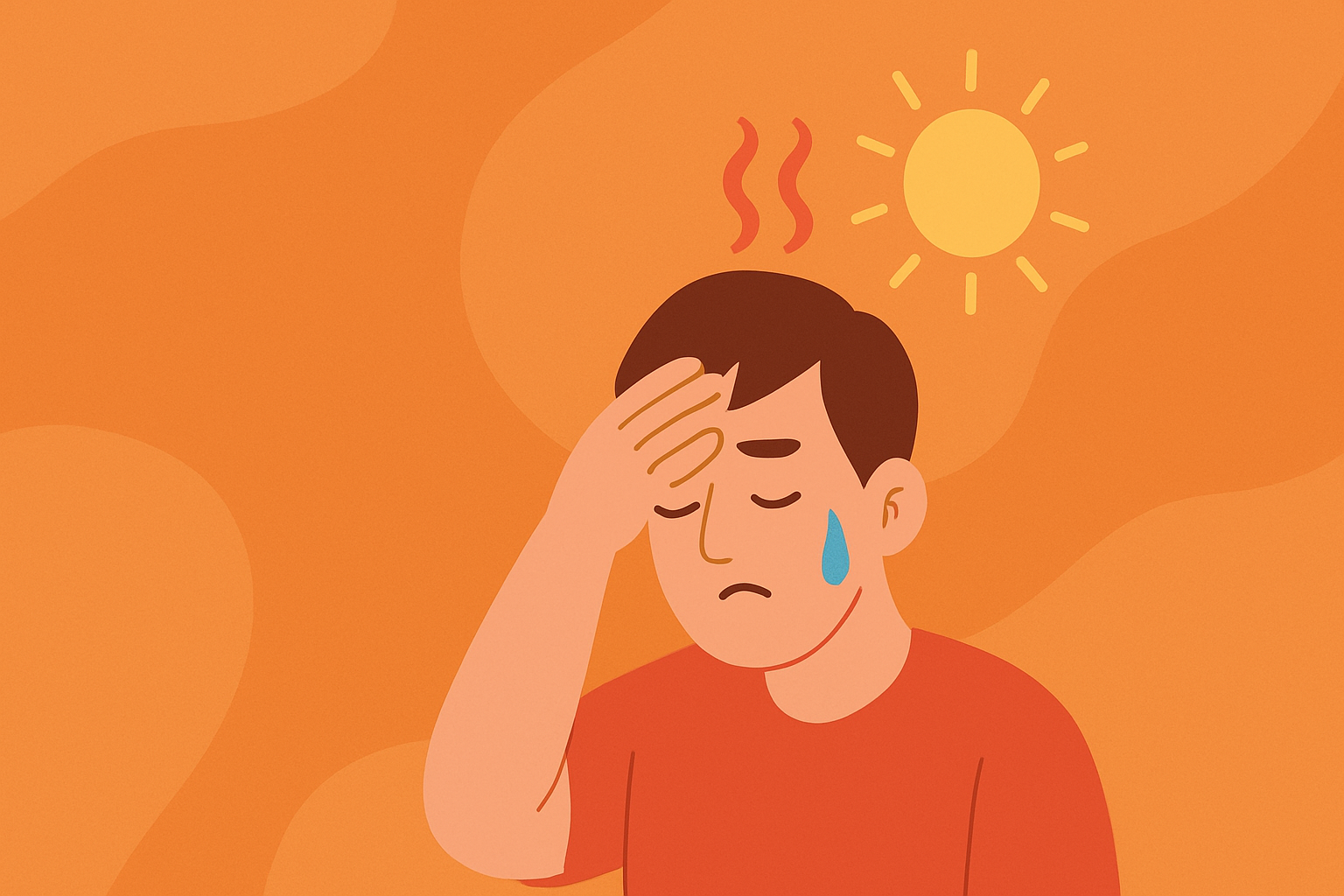

Extreme heat isn’t just uncomfortable—it can be dangerous to your health. When the body is exposed to high temperatures for too long, it can lead to serious conditions like sunstroke, heatstroke, and severe dehydration. These situations may require urgent attention and, in some cases, professional medical care.
In this article, we’ll explain how heat affects the human body, the differences between heatstroke and sunstroke, how to recognize the symptoms, and what you can do to prevent complications.
How Does Extreme Heat Affect the Body?
Your body naturally regulates its temperature through sweating and blood vessel dilation. However, during a heatwave or intense physical activity in the sun, these systems can become overwhelmed. When that happens, body temperature rises dangerously, affecting the nervous system, kidneys, heart, and other vital organs.
One of the first effects of excessive heat is dehydration, a loss of fluids and electrolytes. If not corrected promptly, it can lead to more severe conditions like sunstroke or heatstroke.
Sunstroke vs. Heatstroke: Are They the Same?
While people often use these terms interchangeably, sunstroke and heatstroke are not exactly the same. Both are caused by excessive heat, but they differ in cause, symptoms, and severity.
- Sunstroke: Usually triggered by direct and prolonged sun exposure, especially to the head. It’s considered a mild to moderate form of heat-related illness.
- Heatstroke: More severe and can happen even without direct sunlight. It involves a complete failure of the body’s temperature regulation system and may lead to neurological damage or death if untreated.
▶️ Want to learn more? Check out these detailed guides:
🔗 [What Is Heatstroke and How to Prevent It]
🔗 [Sunstroke: Symptoms, Differences, and First Aid]
Warning Signs You Shouldn’t Ignore
Watch for the following symptoms during hot weather:
- Headache
- Red or hot skin
- Dizziness or confusion
- Muscle weakness or fainting
- Heavy sweating (early stages) or dry skin (advanced stages)
- Rapid breathing and heart rate
- Nausea or vomiting
Dehydration symptoms may also include dry mouth, dark-colored urine, cramps, and fatigue.
Who’s Most at Risk?
While anyone can suffer from heat-related illness, some groups are especially vulnerable:
- Young children: Their temperature control systems are still developing.
- Elderly people: May not feel thirst or heat as strongly.
- People with chronic conditions: Such as diabetes, high blood pressure, or heart disease.
- Outdoor workers: Including construction workers, gardeners, or street vendors.
- Athletes: Especially those training or competing outdoors.
Prevention and First Aid Tips
To prevent heat-related illnesses, follow these simple tips:
- Stay hydrated—even if you don’t feel thirsty.
- Avoid sun exposure between 11:00 a.m. and 4:00 p.m.
- Wear lightweight, light-colored clothing and a hat.
- Rest in cool, shaded, or air-conditioned areas.
- If symptoms appear, stop activity immediately, find shade, and apply cool compresses to the neck, armpits, and groin.
In severe cases or if the person loses consciousness, seek emergency medical help right away.
When to Call a Doctor
Heatstroke is a medical emergency. If you or someone else experiences disorientation, seizures, a body temperature above 104°F (40°C), or loss of consciousness, call for medical assistance immediately.
👉 At Doctor At Home México, we offer in-home medical visits for urgent cases like these, as well as IV hydration therapy to quickly restore fluid and electrolyte balance.
Conclusion
Extreme heat can go from being uncomfortable to becoming a real threat to your health. Knowing the difference between sunstroke and heatstroke, recognizing symptoms early, and taking fast action can make all the difference.
This article is a general guide. For more detailed information, explore our dedicated articles:
🔗 [What Is Heatstroke and How to Prevent It]
🔗 [Sunstroke: Symptoms, Differences, and First Aid]
If you need urgent medical care or IV hydration,
📲 Book a home medical visit here
💧 Request IV therapy at home here
